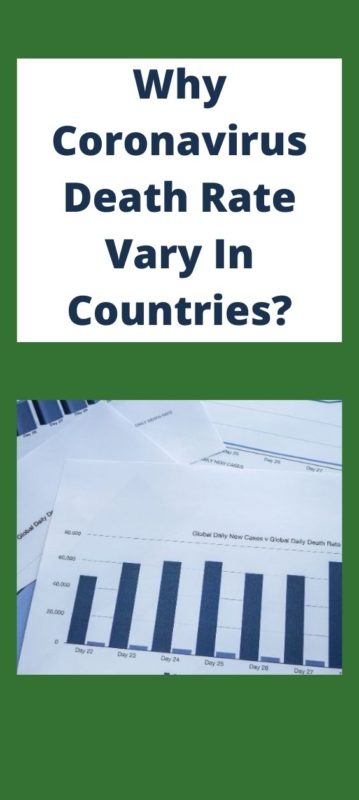Unlike Italy, where the coronavirus death rate is around 10%, the US’s rate is closer to 1.5%. In China, there are different numbers. So why are Covid-19 fatality rates so varied? Well, firstly, there’s not just one rate. There’s one that helps you understand an outbreak. And then there’s two more, which will tell you the risk of dying.
Let’s take a look at how they work. During the outbreak of a new disease, you likely only know that some people have been infected, and some of those people have sadly died. If ten people have been infected with coronavirus and one infection has ended in fatality, it is tempting to conclude that this illness has a coronavirus death rate of 1 in 10 or 10%. But that’s not accurate. The problem is that there’s a time lag between when someone gets infected and when they either recover or succumb to the illness. To get a more accurate number, you should only count those cases that have been resolved. In this example, five infections have been resolved, so by excluding unresolved cases, as we should, our coronavirus death rate has risen to 20%. This is a useful number. It’s the case fatality rate. It’s the number that you’ve probably been hearing the most. This number helps to guide our response. We can separate big populations into smaller groups and discover which are most vulnerable. And we can also see how different effective treatments are. Helpful things to know. So is this number the risk of dying too? No.
Remember, there are two other fatality rates for that, But we can’t get to them just yet. Why? Well, especially early on in an outbreak, we’re still missing lots of information. We haven’t counted all infected people. We’re missing those that have not been tested. Perhaps, because of a shortage of tests. We’re missing those that didn’t seek medical attention, and we’re missing asymptomatic cases. If we found lots of these cases, it would bring our coronavirus death rate down.
But early on, we can’t be sure about how big these groups are. Counting fatalities seems simpler. But it’s not. If a person with another serious condition gets infected and then dies, is it a fatality from the infection or the condition? Or both? Fatalities can be undercounted too. In some places, coronavirus death rate counts have initially only included those within the Health System, with delays in counting fatalities in people’s homes and care homes. So when the count eventually catches up, the coronavirus death rate will rise.
So over time, as we fill in the gaps in our knowledge, our case coronavirus death rate will get closer to the number we probably want to know: the risk of dying. But our case coronavirus death rate will never get us completely there. Why? Because by definition, we’re only counting known cases. We could be missing loads of hidden infections—these guys. To fill in these gaps and tell us our risk of dying, we can turn to our last two rates. There’s the Infection Fatality Rate.
It tells us the risk of dying if you get infected. This is achieved by randomly testing a group of people. This then picks up every case, giving us a truer representation of the number of infections. And subsequently, what share ended with a fatality. Then there’s the Crude Mortality Rate. That tells us the risk of dying relative to the whole population. Or put another way, what portion of the population has died from this disease. But because we don’t know how many people will end up being infected. We won’t know this figure until the disease has run its course. So, we have three fatality rate types: two that give us a risk of dying for those infected and whole populations. And a third that, though dealing with partial information, is incredibly useful for understanding disease and understanding which treatments are most effective. Knowing what these numbers are for and what information they’re based on means that we can use them more effectively.
Liked this article? Share it to say “thanks!” Your support is much appreciated!
I would love to connect with you!
You can find me on TWITTER1, TWITER2, INSTAGRAM FACEBOOK, PINTEREST,










